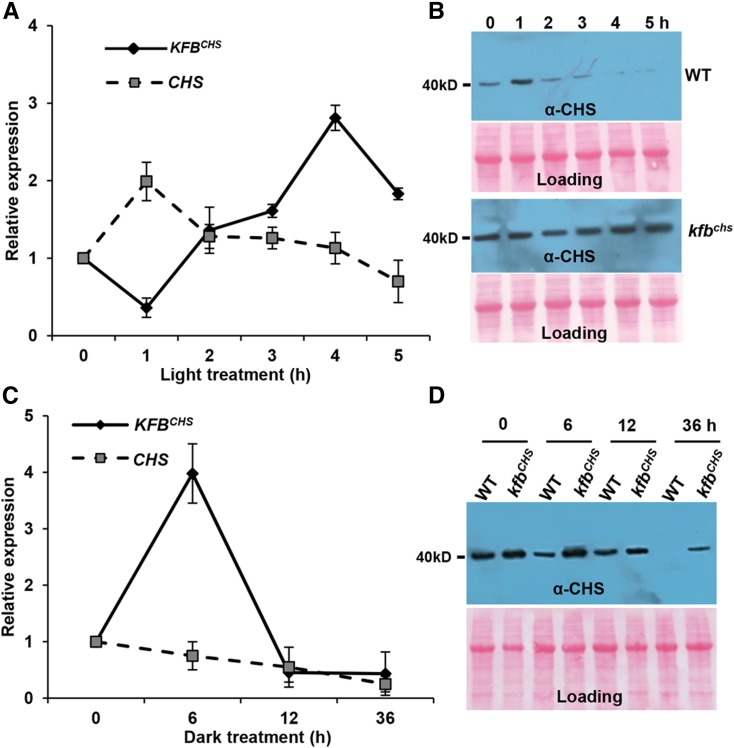Figure 6.
KFBCHS Is Responsive to Dark-to-Light and Light-to-Dark Transitions.
For dark-to-light treatment, the 5-DAG Arabidopsis seedlings were grown under normal growth conditions as described in Methods and first transferred to the dark, then kept for 12 h, and finally switched to white light (fluence rate 104 ± 5 µmol·m−2·s−1) at 22°C for 5 h ([A] and [B]). For light-to-dark treatment, the 5-DAG seedlings under continuous white light (fluence rate 64 ± 2 µmol·m−2·s−1) at 22°C were switched to the dark for 36 h ([C] and [D]). The total RNAs and proteins were extracted from the collected samples at the indicated time points.
(A) RT-qPCR analyses of the expression levels of KFBCHS and CHS over the course of 5 h after seedlings switching from dark to light. Data represent means ± sd of three biological replicates; each replicate represents the mixed seedlings (0.1 g FW) from one Petri disk plate.
(B) Immunoblots with anti-AtCHS antibody against the total proteins from wild-type (upper) and kfbchs mutant (Salk_085384) seedlings (lower) with the same treatments as in (A). Total protein was stained with Ponceau S as the loading control.
(C) RT-qPCR analyses of the expression levels of KFBCHS and CHS over the course of 36 h after seedlings switching from light to dark. Data represent means ± sd of three biological replicates; each replicate represents the mixed seedlings (0.1 g FW) from one Petri dish plate.
(D) Immunoblots with anti-AtCHS antibody against the total proteins from wild-type and kfbchs mutant (Salk_085384) seedlings. Total protein was stained with Ponceau S as the loading control.

